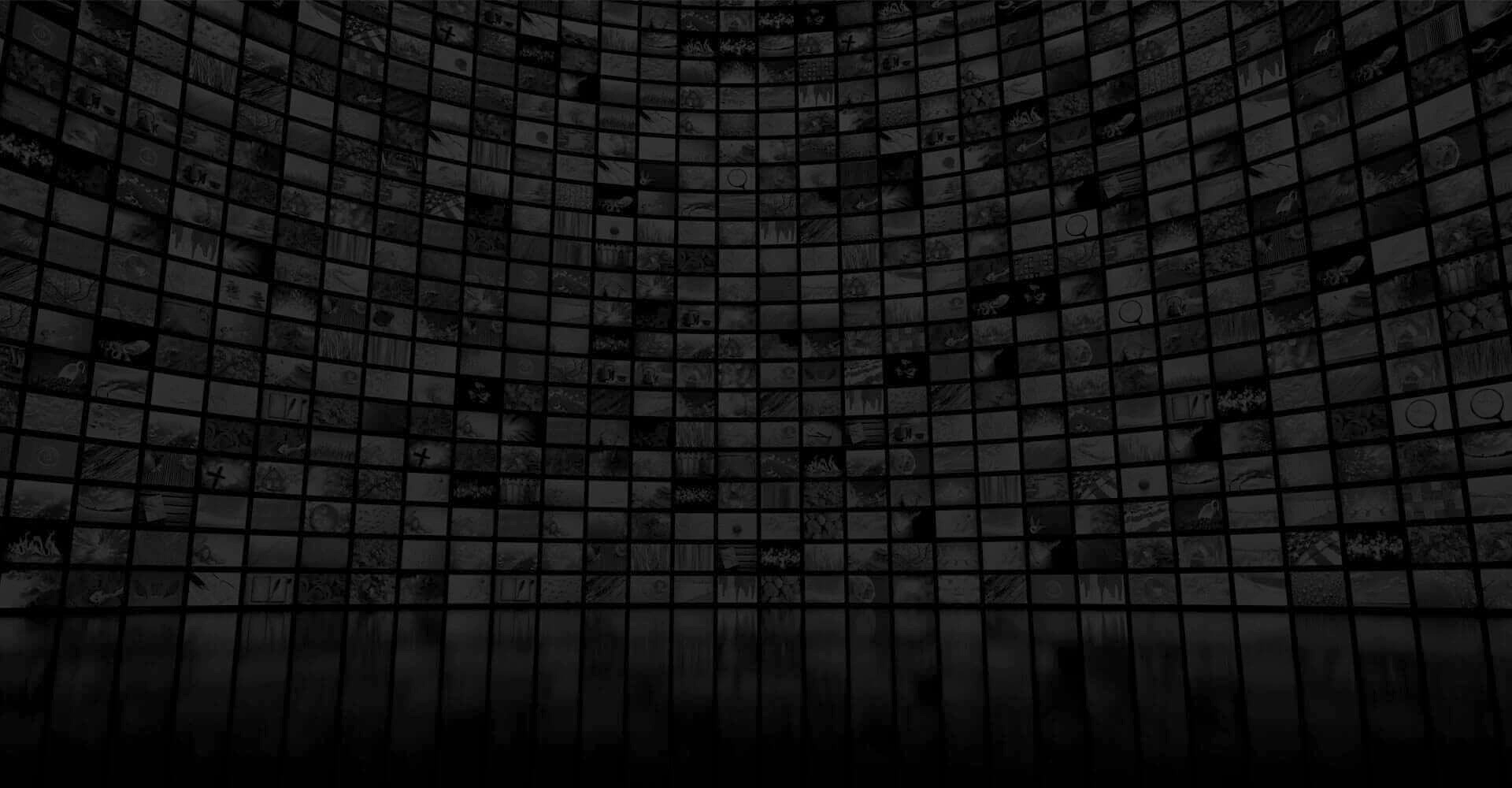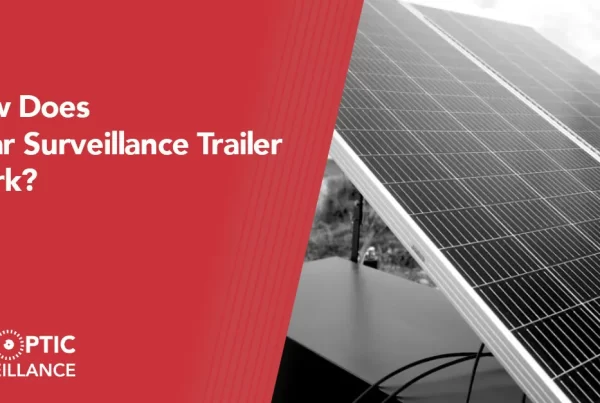Complete guide to business security camera systems
This is a complete guide to building a business security camera system, from selecting the right cameras to utilizing video analytics.
One of the first elements that comes to mind when building the infrastructure for a new company is a set of business security cameras. Your security cameras, however, only make up a small portion of the required security infrastructure. A greater degree of protection and a bigger return on your security camera investment will result from concentrating on the overall security camera system for your business.
The idea of commercial security camera systems, its components, and the benefits of having one are all explained in this article. The definition and elements of the system come first. Finally, using a floor plan as a guide, we walk through a real-world use case of establishing a commercial security camera system.

Commercial security cameras for business
- Business security cameras with enhanced coverage and IR that improve situational awareness
- Video analytics with AI to find incidents
- Hours of video are easily sorted through by Video Search to locate a suspicious person or vehicle.
- Integrates with third-party ONVIF® compliant platforms
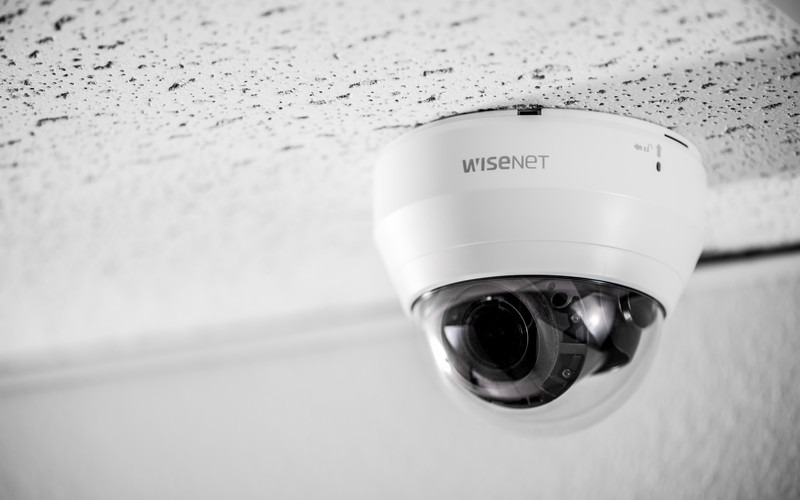
WHAT IS A BUSINESS SECURITY CAMERA SYSTEM?
The complete video security ecosystem is a business security camera system. Together with your security cameras, it also consists of all the hardware and software elements that enable you to get the most out of your security cameras.
WHAT ARE THE COMPONENTS OF A BUSINESS SECURITY CAMERA SYSTEM?
A business security camera system has four main components:
- Business security cameras
- Data storage
- Internet connection
- Video analytics
This list of the elements of a security camera system for companies is quite detailed. The loss prevention system, which contains many of the other hardware items you may anticipate to see, such as your POS, RFID tags and gates, etc., can also include this.
Business security cameras
The system’s core components are security cameras. The majority of business locations need some kind of video monitoring. The same is true for workplaces, campuses of universities and colleges, and other places. Yet, if you merely stop at purchasing security cameras, you will be left with an infrastructure that is not fully utilized.
Data storage
Some cameras include data storage, although it’s often not very much. If you have the bandwidth and a strong connection with no downtime, other cameras can store data directly to the cloud. Typically, your data storage system must be a DVR (digital video recorder) or NVR (network video recorder) system. In the section below, we compare DVR and NVR in brief, but you should read our comprehensive comparison article for a detailed analysis of their similarities and differences.
Internet
Given that we live in a connected world, your infrastructure will always be more functional with an Internet connection. When it comes to a commercial security camera system, the Internet enables remote backup, remote access to your cameras, and many other advantages that significantly increase user productivity.
Video analytics platform
A modern commercial camera system must have video analytics. Cameras are comprehensive data sources with applications well beyond security. Every company choice may become more difficult if data is gathered, stored, and then never used. Here are just a few ways that a video analytics platform might be of use to you.
Security related:
- Integrate security cameras with your POS to match video footage to possibly suspect transactions (voids, cash refunds, high discounts, zero-dollar transactions, etc.).
- To find an event fast, use motion search to discover all activity nearby.
- Create time-based perimeter defenses for your business using the Video Alarms function to keep it safe when you’re not there.
- Get notifications when certain actions, things, or requirements are fulfilled.
- Get notified when customers enter particular parts of your company.
Cloud Based Access Control
Learn about cloud based access control system and its futures.
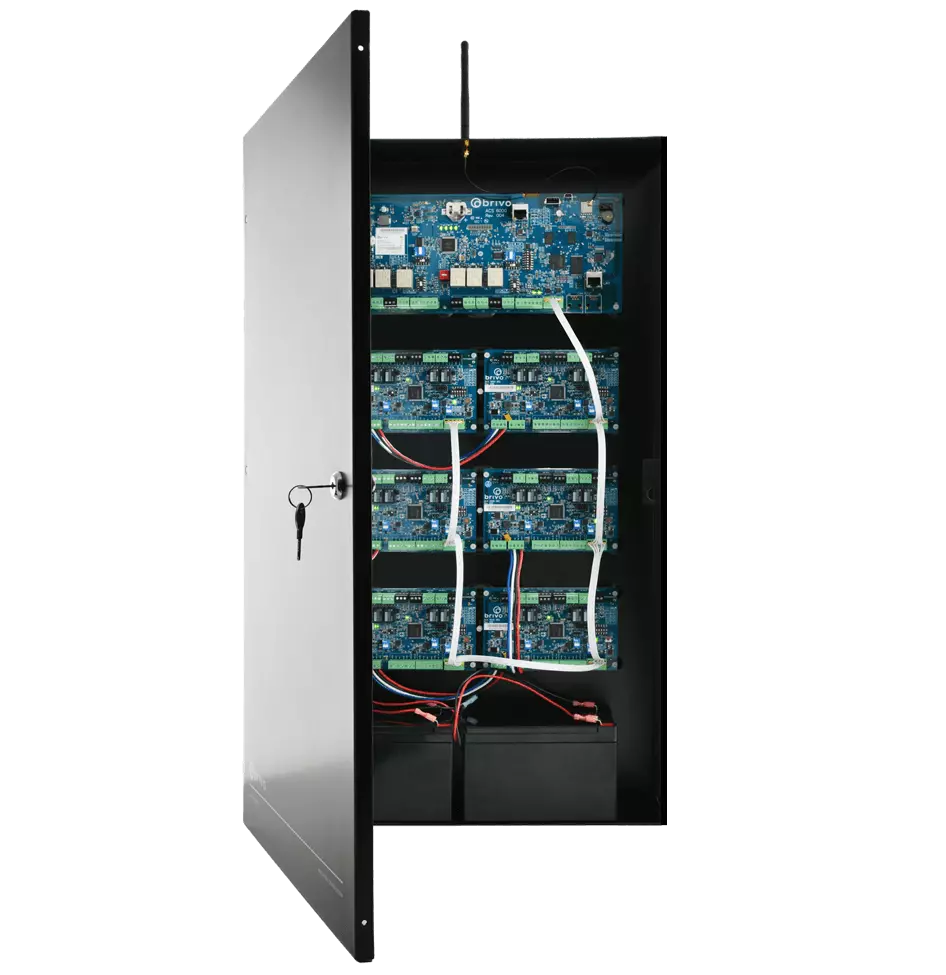
WHY DO YOU NEED A BUSINESS SECURITY CAMERA SYSTEM?
Systems for commercial security cameras assist your company. Here are just a few items you might anticipate eliminating from your body.
Minimize the loss of inventory
You may quickly search through an entire day’s worth of video content with strategically positioned cameras and a powerful video analytics platform. This can assist you in identifying inventory shrinkage in all of its manifestations, including shoplifting, organized retail crime (ORC), and merchandise that fails to arrive at or departs from the loading dock.
Remote video monitoring
We have a separate post specifically devoted to the value that remote video monitoring provides. Better control over the daily operations of all your sites may be achieved by being able to monitor them all from the company headquarters or even your home.
Increase safety
The security of your employees, clients, and property is a top responsibility in light of the recent rise in violent crime. Safety doesn’t merely refer to protection against potentially violent situations, though. Several aspects of safety will be enhanced by a well-connected and monitored security camera system for your company. You may ensure that emergency exits are unobstructed, wet floor signs are in place to minimize slip-and-fall accidents, and visitors aren’t accessing prohibited areas like kitchens or warehouse space by keeping an eye on corporate and regulatory compliance.
Optimize operations
Your businesses’ heat maps may show you where consumers tend to congregate. The greatest products should be placed where people will naturally go to boost sales. Making ensuring your staff is actively assisting customers might achieve the same result. These are just two examples of how your company security cameras may improve how your businesses run.
Receive Notifications
Some incidents are simply too dangerous to look for after the fact. You can receive notifications when motion is detected outside of regular business hours by setting up the Video Alarms system. After then, you may monitor the situation in real time before determining whether to call for help.
This raises perimeter security while lowering the chance of fines from erroneous alarms. Even during business hours, you may get notifications when someone approaches a vulnerable section of your establishment. Video alarms are more useful than conventional panel alarms that just guard doors and windows if your organization has significant items kept outside, like a dealership or DIY shop.
The likelihood of fraud is higher for several transaction types. When these transactions take place, you can be informed so that you can watch the relevant video right away.
Access Your Office with Smartphone
Discover why thousands of companies have Access Control System
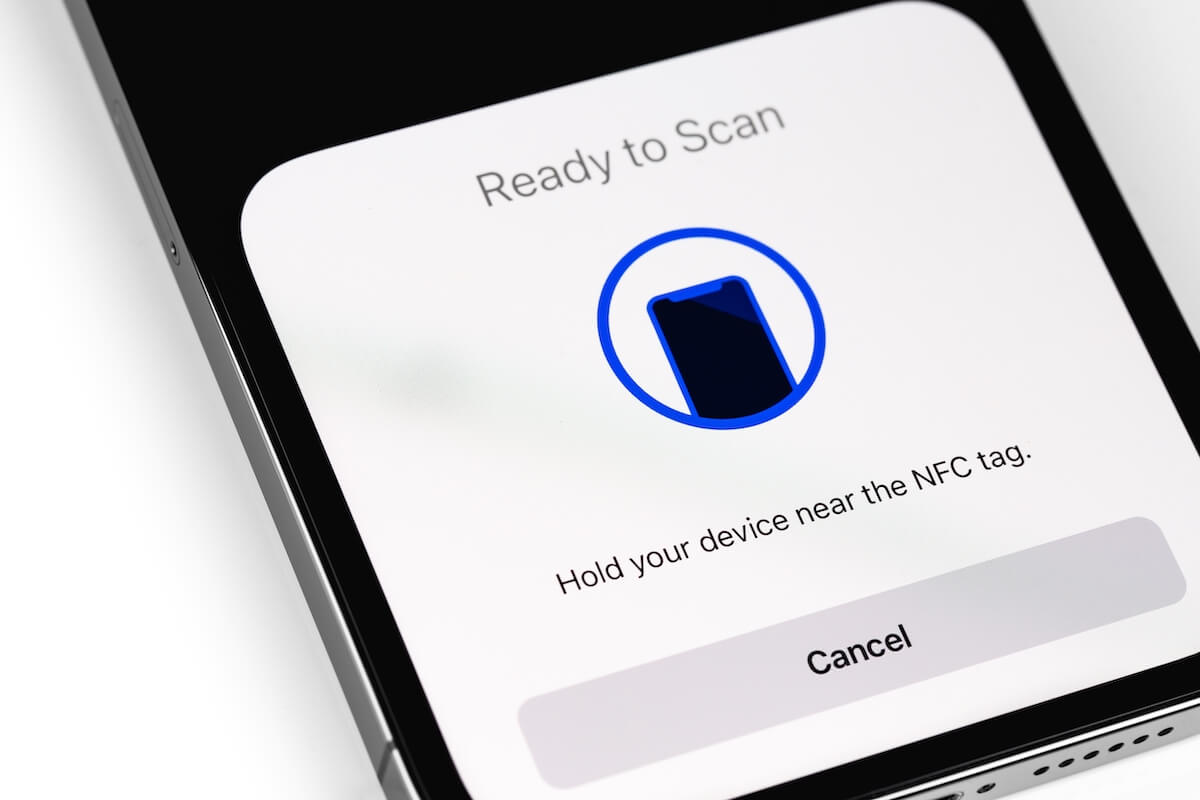
WHAT ARE THE MAIN TYPES OF BUSINESS SECURITY CAMERAS?
There are many different types of business security cameras. Let’s break down all the specific definitions.
CCTV cameras
Cable television is just the reverse of closed-circuit television (CCTV). CCTV sends video to a limited number of locations, whereas broadcast aims to distribute footage to many customers. For this reason, the terms CCTV and video surveillance are sometimes used interchangeably.
Business CCTV security cameras used to send their video to the local security office, but nowadays they are typically connected to the Internet so that more stakeholders, such as managers, loss prevention experts, insurance companies, and even emergency services dispatchers, can view their footage remotely.
Analog cameras
As compared to more recent IP cameras, analog cameras might occasionally be seen as outdated technology. For instance, the video quality of analog security cameras is often limited to standard definition (SD). Yet, they are frequently dependable and have long served as the foundation of video surveillance. Nevertheless, RF wireless analog cameras are also available. Coaxial cable connections and power cords are typically required for them to send video.
It’s not necessary to replace your present analog security cameras just because you want to tell your procurement staff to only buy digital security cameras in the future. There is no need to change your complete corporate security camera equipment in order for our platform to function with the majority of IP and analog cameras.
TVI cameras
Analog video may be sent via a coaxial cable using a transport video interface (TVI). It is only one of several methods being utilized to upgrade analog cameras to high definition (HD).
The first of TVI’s two key objectives, a higher definition, has only been achieved. The longer wired transmission range is the alternative. The maximum wired transmission distance for most analog security cameras, often known as CVBS for composite video baseband signal, is 300 feet. Some of these more recent ones, like TVI, have 900-foot ranges.
Bullet cameras
Some of the most popular commercial security cameras on the market are bullet cameras. They are tiny and got their name because of how they look. They are sometimes referred to as “lipstick cameras” for the same reason.
They are very adaptable due to their compact size and simple installation. They may be found both indoors and outside, and they are typically more covert than bigger security cameras (e.g., the turret security cameras discussed next). Nevertheless, compared to dome cameras, they are less resistant to vandalism due to their design (see below).
Certain bullet cameras contain varifocal lenses, which enable you change the camera’s field of view without sacrificing image quality. You must, however, manually adjust the camera for any adjustments.
Turret cameras
Ball-and-socket security cameras are used in turrets. The camera, which resembles a ball, may be moved about inside the “turret” to see in various directions. They can be installed and repositioned more easily as a result. However after installation, you’ll have to physically move the camera to acquire a different field of vision.
IP cameras
Internet protocol cameras (IP cameras) send data digitally and are operated over an IP network. Some IP cameras can function by utilizing the IP networking protocols without the requirement for local storage. But, laws may still force you to have storage on the property. Additionally, having cloud and/or on-premises storage is regarded as a more dependable approach because Internet bandwidth is not always totally consistent.
There are two major methods that IP cameras can connect to a network: WiFi or a power over Ethernet (PoE) connection. Power and network access are both provided through PoE cables for transmission and reception. If WiFi is selected, power for the cameras will still be required, either from a battery or by plugging in an adapter. WiFi cameras may also be less dependable since interference or shaky connections may cause video feeds to become momentarily unavailable.
Dome cameras
Cameras with a dome on top are known as dome cameras. Employees and clients may be less certain of what is or is not in the camera’s range of vision as a result of this obscuring the direction they are facing. They are more resistant to vandalism thanks to their design and dome protection.
Its fixed viewing angle, like that of many other cameras on this list, cannot be altered remotely.
Wireless cameras
The video feed from wireless commercial security cameras is transmitted wirelessly. They still need electricity. Although they exist, security cameras that are powered by batteries or the sun are often exclusively utilized in places where electricity is not practicable.
Business security cameras can be wireless in both digital and analog formats.
Wireless analog cameras
An RF signal is used to link wireless analog cameras to the network. Because mobile phones and other surrounding devices might interfere with the transmission, RF signals are less dependable than WiFi.
Wireless digital cameras
WiFi is used to link wireless digital (IP) cameras to the network. Wireless digital cameras can be thought of as being more dependable than analog ones since these signals are more resilient to noise while having a shorter range.
PTZ cameras
Pan, tilt, and zoom, or PTZ, is essentially what they can accomplish. PTZ security cameras may be remotely operated to zoom in on a specific object or pan across a bigger area.
The cost of this extra capability is typically greater. But, by employing fewer cameras overall, you might be able to offset the increased cost per camera. However keep in mind that PTZ cameras only capture what the lens is looking. Also, the mechanical PTZ capability, which is sometimes a weak spot in these cameras, is included.
360 degree cameras (fisheye cameras)
The development of commercial security cameras may be thought of as progressing to fisheye cameras. PTZ cameras outperform standard turret cameras by enabling remote viewing angle adjustment. By always providing the user with a 360° by 180° vision, fisheye cameras go even farther. They are therefore excellent choices for keeping an eye on big, open spaces like a warehouse.
COMPARISONS OF BUSINESS SECURITY CAMERA
Systems for commercial security cameras are complex. There are several choices to be made about the components. Listed below are some frequent points of comparison.
WiFi vs. Ethernet
The first thing to keep in mind when comparing WiFi and ethernet is that a camera’s wireless or wired status simply affects how data is transmitted via it. WiFi cameras still need power to function, and this power is often obtained by plugging them into a socket.
PoE (power over Ethernet), on the other hand, combines transmission and power in a single Cat 5 Ethernet connection. This indicates that there will still be a single cable connection for both WiFi and PoE security cameras.
Although WiFi is typically thought of as being noise-resistant, it will never be as quick, robust, or secure as Ethernet. Moreover, WiFi has a finite range, often around 50 feet before the signal becomes too weak for dependable video transmission; however, this distance might be shortened based on the kinds and amount of obstructions present between the router and cameras. IP cameras may be safely utilized at distances of more than 300 feet using Ethernet connections.
DVR vs. NVR
Whether you pick a DVR or an NVR system, it will likely serve as the major structural support for your company’s security camera system. Because of this, we write a whole post comparing DVR and NVR systems.
The way that DVR and NVR receive video data is where they differ from one another. Analog cameras provide their raw data to DVRs. Before to recording, the DVR processes the signal.
NVRs, on the other hand, do not process the signal that they receive. Before being delivered to the NVR, the camera processes the video signal.
Local storage vs. cloud storage
“Both” is a common response when asked whether local storage or cloud storage is better. You would then have local storage as well as cloud backup storage. Data loss is quite improbable with this security technology, which is particularly secure.
Using an NVR/DVR device or built-in camera storage are the two main types of local storage.
Storage in the cloud needs a consistent, dependable Internet connection. Not usually is this possible. The advantage of storing data on the cloud is that you can view your video from any location, though.
SD vs. HD vs. 4K
The resolution that your company security cameras record footage at is denoted by the letters SD, HD, and 4K. Although most traditional analog security cameras only record in SD, there are those on the market that record in HD. On the other hand, IP cameras often feature 4K resolution.
The number of pixels that are captured in a picture is the essence of resolution. The various resolutions are summarized as follows:
SD usually refers to resolutions below 720×480 pixels
- HD usually refers to 1280 x 720 or 1920 x 1080 pixels.
- 4K refers to 3840 x 2160 to 4096 x 2160 pixels.
Pixels are little color dots, and more of them mean the dots are closer together and therefore you can see more details. This might lead you to believe that higher resolution is always better. However, there are several other considerations that should be included in your decision-making process.
Bandwidth
Your Internet’s bandwidth may be thought of as its speed. To send video at a higher resolution, more bandwidth is needed. The recommended bandwidth amounts for various video resolutions are shown in the following graph:
| Video resolution | Average bandwidth use for simultaneous viewing (at 10 fps) * |
| 720 x 480 | 0.75 Mbps per camera |
| 1280 x 720 | 1.5 Mbps per camera |
| 1920 x 1080 | 2 Mbps per camera |
| 3840 x 2160 | 8 Mbps per camera |
| 4096 x 2160 | 10 Mbps per camera |
Keep in mind that the requirements are significantly impacted by the video’s frame rate. Yet, compared to frames per second, the overall resolution has a significantly greater impact on the amount of bandwidth used in contemporary encoding techniques.
The amount of bandwidth needed for 4K quickly increases if you are broadcasting from several cameras to the cloud.
In this manner, the SD stream is immediately visible, but the HD stream has a little buffering delay. Moreover, you are not need to upload every security camera video to the cloud at once.
Field of view
The angle, width, and height that a camera is recording are referred to as its field of view. Security cameras for businesses come in a variety of fields of view. For smaller, zoomed-in cameras, they can be as low as 40° and as high as 360° by 180° for a 360 degree commercial security camera.
The final video quality depends on the FOV/resolution ratio of your cameras. A smaller field of vision will reveal more details than a broader angle at the same resolution. Due to this, 360-degree cameras often have a significantly greater resolution than other types of cameras.
Plug-in cameras vs. battery-powered cameras
There are undoubtedly security cameras with batteries. Unfortunately, they often only have use in locations without access to local electricity. It would be more difficult to install a power cord in locations where a security camera may be plugged in and/or where continuous 24/7 video recording is necessary than it would be to charge the battery on a regular basis (or PoE connection).
Depending on the amount of motion occurring in their field of view, battery-powered security cameras that only operate when triggered, such as by a motion sensor, can last several months on a single charge. As a result, they may be useful in remote locations with lower security needs, but they are generally not advised.
IP camera vs. analog cameras
Analog security cameras deliver analog video through a coaxial wire, whereas IP security cameras send digital video using Ethernet or WiFi connections. The primary distinction between them is this, although there are others as well.
Resolution
In contrast to IP security cameras, which are at least HD and can also be found in very high resolution, analog security cameras often come in SD or HD (for example, TVI security cameras).
Video analytics
VSaaS options are available for businesses that use both analog and IP security cameras. Although IP security cameras can give greater data, analog cameras are still in use today. Our platform’s ability to integrate with your current corporate security camera system architecture decreases your beginning expenses.
Power over Ethernet (PoE)
PoE does away with the requirement for separate power and data cables. This is a significant advantage that IP security cameras have over analog ones.
System cost
On average, IP security cameras cost more than analog ones. Moreover, IP cameras require only an Ethernet wire for installation, whereas analog cameras need a coaxial cable for the signal and a power supply cable. This makes IP cameras simpler and less expensive to install. Because to the combination of these capabilities, acquiring IP security cameras when purchasing a new company security camera system is typically on par with or even less expensive than purchasing an analog security camera system, as well as future-proofing your system for upcoming advancements.
Join UPS Stores Using Access Control
With Cloud Based Access Control, UPS Stores can regulate and track who enters its facility for PO Boxes.
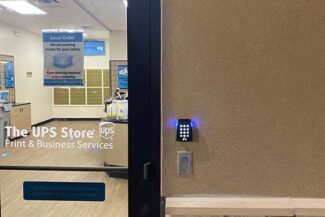
WHAT SHOULD YOU CONSIDER BEFORE PURCHASING A BUSINESS SECURITY CAMERA SYSTEM?
While building or expanding your commercial security camera system, numerous choices must be taken. Let’s examine a few of the most significant.
Installation and purchasing of cameras
Several businesses will require that their clients buy an entirely new set of security cameras in order to link them with their data analytics platform. We wish to have no commitments and inexpensive initial costs.
We want clients to remain with us because we go above and beyond their expectations, not because they were coerced into a lengthy contract with a substantial sunk cost for the purchase of proprietary cameras.
While we can assist you in finding and installing any kind of security camera at a competitive price, we can also work with your current cameras. Also, you are free to purchase your own cameras and perform any installation tasks on your own or with the help of a reliable local installer.
Type of camera
The choice between analog and IP security cameras must first be made. In terms of brand-new purchases, IP cameras are preferable. The different categories of security cameras and their coverage must then be taken into account. Lastly, although some cameras may be installed both indoors and outdoors, some are exclusively advised for interior installations.
Type of storage
DVRs are used with analog cameras, NVRs are used with IP cameras, and hybrid solutions are also available. Also, while cloud storage is a possibility, these solutions are on-site. The most costly component of the system is often the recorder.
Generally speaking, if you stream video straight to the cloud, bandwidth will become an issue; nevertheless, having a cloud backup of your data provides an additional layer of security.
Because it offers so much, cloud video surveillance is increasingly replacing traditional methods.
Amount of storage
Do you like a video retention period of 30, 60, or 90 days? Is HD enough, or do you need 4K? You may choose the size of equipment you require for local video storage by answering these questions.
WHAT SHOULD YOU CONSIDER BEFORE PURCHASING A BUSINESS SECURITY CAMERA SYSTEM?
Video surveillance for businesses may be expensive. Also, they offer some of the richest data that you can discover. Simply put, you aren’t getting the most out of your investment—and you aren’t receiving all the information you need to make the best decisions—if you aren’t utilizing a video analytics platform to search, analyze, and view that data.
There are less visible advantages in addition to loss prevention, shrinkage reduction, and increased security for your clients, guests, and staff. Your corporate security camera system was certainly designed with these advantages in mind, but decreased liability really results in some of the largest expense savings.
With remote video surveillance, you can keep an eye on your property to ensure that corporate rules and legal requirements are being followed. Only two instances are given here:
- According to your company’s policy, all wet areas must be cleaned up and marked with a wet floor sign. According to the forecast, the northeast will get rain. You may verify that wet floor signs are being used by viewing all of the cameras pointed at front entrances at all of your locations on our security cameras. This lessens your responsibility for future slip-and-fall accidents.
- The labor scarcity makes it more difficult to recruit and keep staff. Shorter hours indicate that some places are making savings. Several emergency exits have been obstructed by items because stockrooms are not kept as clean as they should be. You’re seeking for a productive strategy to keep an eye on every one of your sites after receiving some recent Occupational Safety and Health Administration (OSHA) penalties.
WHAT SHOULD YOU CONSIDER WHEN CHOOSING A BUSINESS SECURITY CAMERA?
Some of the key characteristics to take into account while picking your security cameras are as follows:
- Resolution: The amount of detail that will be captured depends on the camera’s resolution. Low quality shouldn’t be an issue if you are recording up close on a tiny region. Higher resolutions are often advised for modern video surveillance, though.
- Frame rate: The amount of frames per second that your camera records is known as the frame rate. Your ability to follow individuals across your facilities will be drastically reduced if your frame rate is low (for example, 5). Also, you might need to record at a certain frame rate depending on the industry in which you work. 10 frames per second is the standard frame rate for surveillance systems because it strikes a fair compromise between quality and storage requirements.
- Camera type: For various circumstances, different cameras work best. A 360 degree security camera may record a larger area than a bullet or turret camera. In this approach, the former is best utilized to keep an eye on a hallway or entryway, but the latter is more suited for keeping an eye on an open space, such a dining room or a portion of a store.
- Indoor/outdoor: In general, all security cameras are functional indoors, but not all security cameras are suitable for outside use. If you require both interior and outdoor video security, check that any cameras installed outside or in severe settings, such freezers, can operate in your region’s climate.
- Lighting: Certain cameras are made to function in low light. If you think this is crucial, you could choose to get IR-capable cameras.
- Audio: Not all commercial surveillance cameras capture audio. If you think you might require this, make sure to pick cameras that can capture audio.
Commercial security cameras for business
- Business security cameras with enhanced coverage and IR that improve situational awareness
- Video analytics with AI to find incidents
- Hours of video are easily sorted through by Video Search to locate a suspicious person or vehicle.
- Integrates with third-party ONVIF® compliant platforms

BUSINESS SECURITY CAMERA SYSTEMS FAQ
Here are some frequently asked questions (FAQs) about business security camera systems.
What does CCTV stand for?
CCTV, or closed-circuit television, is a term. Security cameras are sometimes referred to as CCTV since, unlike broadcast TV, the footage is not generally shared. Be aware that some individuals exclusively use the term “CCTV” to describe analog cameras, while others use the term to describe all security cameras.
What are the best security cameras for a business?
Houston Security Solutions work with a variety of camera types and brands. Hanwha and Axis cameras are two well-regarded brands.
How much does a business security camera system cost?
The cost of a company security camera system will vary depending on the number of cameras needed, the types of cameras used, how long the recorded footage must be kept, and other considerations.
What are the top types of CCTV cameras?
Security cameras come in several varieties. The following are some examples of frequently used security camera models:
- Bullet cameras
- Turret cameras
- Dome cameras
- PTZ cameras
- 360 cameras
How much does it cost to install cameras in a business?
Depending on the kind of cameras used, security camera installation costs may vary. Power over Ethernet (PoE) cameras may involve running new lines, although wireless battery-powered cameras may be placed by the user with ease.
How many security cameras do I need for my business?
The number of cameras your company needs will depend on the kind of business it is and the local hazards. It is advised that you hire a specialist to tour your company and offer advice on the kinds of cameras you need and where they should be located before choosing a camera plan.
Can security cameras be a business expense?
Yes. Definitely, security cameras are a business cost.
Which is better, wireless or wired CCTV cameras?
Although connected CCTV cameras are more dependable and need less upkeep, wireless CCTV cameras are simpler to install. Houston Security Solutions often advises using wired CCTV cameras.
What is the difference between CCTV and surveillance cameras?
Another name for a security camera or surveillance camera is a closed-circuit television (CCTV) camera. In this context, closed-circuit is the reverse of broadcast since video from security cameras is not generally disseminated.
Which CCTV camera is better, HD or IP?
A local WiFi or Ethernet network is used by Internet protocol (IP) cameras to transmit digital video. High-definition (HD) video refers to the level of pixel quality in the video feed. Most IP cameras have the ability to record in HD or better.
What is the best surveillance system for the money?
It’s crucial to have a whole surveillance system in addition to security cameras. This features a built-in system for video analytics that can link video to other information, including POS transactions or motion events. This reduces operator workload, facilitates the sharing of evidence with law enforcement, and raises the possibility that theft occurrences will be discovered, increasing return on investment (ROI).
Do security cameras use a lot of electricity?
A typical security camera uses 2 to 10 W of power, or 1. 7 to 7. 5 kWh each month. The average security camera costs between $0.25 to $1.35 per month in energy at the $0.18/kWh national average price for electricity in the United States.
Does having security cameras lower business insurance?
Security cameras can lower a company’s risk exposure. A corporation would probably pay less for insurance overall if it makes fewer claims through reducing theft incidents. Security cameras can also deter fictitious injury or property damage claims by documenting the incident, which can save insurance costs.
What is NVR vs DVR?
The difference between a DVR (digital video recorder) and an NVR (network video recorder) is in how they acquire video data. Analog cameras provide their raw data to DVRs. Before to recording, the DVR processes the signal. NVRs, on the other hand, do not process the signal that they receive. Before being delivered to the NVR, the camera processes the video signal.
Can wireless cameras work without the Internet?
Video from wireless cameras must be transmitted via the neighborhood WiFi network. An Internet outage shouldn’t stop a wireless camera from recording if you have local video storage or if the camera has local storage.
Is there a security camera that records continuously?
The majority of security cameras can record constantly as long as you have enough storage capacity. If you want to halt recording on a regular basis out of concern for your privacy, we also offers the choice of time-based recording. This is particularly crucial for companies that share space, like a childcare within a community center.
Is there a security camera that will record if WiFi goes out?
Security cameras receive electricity via a direct connected connection from Power over Ethernet (PoE). They can keep recording video even if the WiFi is down since they send video through Ethernet.
How long do business security cameras keep footage?
The demands for video retention vary by industry. A customized retention period is available from Houston Security Solutions. The majority of firms choose for 30, 60, or 90 days of video retention, however some regulated sectors may impose a one-year requirement.
What is the longest distance for a security camera?
The kind and caliber of the lens will determine how far away an object may be captured in detail by a camera. A license plate may be seen well by certain 4K turret cameras at a distance of several hundred feet under optimum lighting.
The method of transmission affects the maximum amount of data that may be sent from the camera to the video storage device. WiFi has the shortest communication range, coaxial cables have the shortest transmission range, while Ethernet has the longest transmission range.
What is the difference between security cameras and surveillance cameras?
The terms “security cameras” and “surveillance cameras” are interchangeable. Depending on what they wish to stress, people will use the names accordingly.
Do security cameras record in the dark?
Infrared LED lights that are incorporated into certain security cameras allow them to record in the dark. Better nighttime recording capabilities are indicated by the presence of more infrared LED lights.
Do motion sensor cameras record all the time?
It is possible to configure certain DIY security systems to only record when motion is detected. Often, business security cameras continuously record.
Do you need WiFi for a security camera?
WiFi security cameras are available. To power the camera and send the video to the local storage system, most security cameras, however, use Power over Ethernet (PoE) connections. You should use PoE security cameras wherever feasible since they are more dependable than WiFi security cameras.
Are white or black security cameras better?
Your security camera’s hue of choice will not affect their functionality. According on your desire, you may pick a certain color to make the security stand out more or fade into the backdrop.
How do I choose a good security camera?
Making a wise choice for security cameras may be challenging. The cameras’ ability to interface with your other systems is one thing you might want to take into account.
How much area can a CCTV camera cover?
The kind of lens a security camera uses will determine how much space it can cover. A 360-degree camera, for instance, may cover an area equivalent to 4-6 bullet cameras.
Do security cameras record audio?
There are models of security cameras that do capture sound if it’s crucial to your business but not all of them do.
Are security cameras recording if they have no lights?
It might be challenging to determine from a security camera’s appearance if it is recording. As criminals presume they are always recording, this increases the deterrent power of security cameras.
How do you tell where a security camera is aimed?
Where bullet cameras are pointed is obvious. People cannot identify where the camera is pointed since dome cameras obscure this information. In reality, fisheye cameras constantly record in all directions.
Are security cameras an invasion of privacy?
No. Security cameras may be installed anywhere, so people shouldn’t anticipate privacy in public spaces. Security cameras cannot be installed in restrooms, locker rooms, and several other locations since these spaces do have an implied expectation of privacy.
What type of security cameras do businesses use?
Depending on the sort of area that has to be monitored, businesses utilize a wide variety of security cameras. The most popular security camera kinds are 360, 360o, turret, dome, and bullet cameras.
What is the best security camera 2023?
There are many great security camera brands. Hanwha and Axis cameras, Uniview security cameras for example, are considered very reliable.
What security cameras cannot be hacked?
Regrettably, the Internet of Things (IoT), a term used to refer to all Internet-connected devices, is susceptible to hacking. Physical security must include cybersecurity because of this.
How much is a security system for a restaurant?
As each restaurant is unique, a different number and kind of cameras will be needed. An excellent guide regarding restaurant security cameras is provided.
What are the two types of security cameras?
Analog and Internet protocol (IP) security cameras are the two basic categories of security cameras. Despite the superiority of IP cameras, analog cameras can still be useful and do not always need to be replaced before they reach their natural end of life (EoL).
Is 4K or 1080p better for security cameras?
In comparison to 1080p or 720p cameras, 4K cameras give crisper pictures. But that results in more data being used. The ideal security camera is the one that best suits the demands of the company, whether those needs be for high-end 4K or regular definition cameras.
Why are 360 cameras sometimes called fisheye cameras?Since the video seems distorted like a fisheye lens, some people call 360 cameras “fisheye cameras.”



